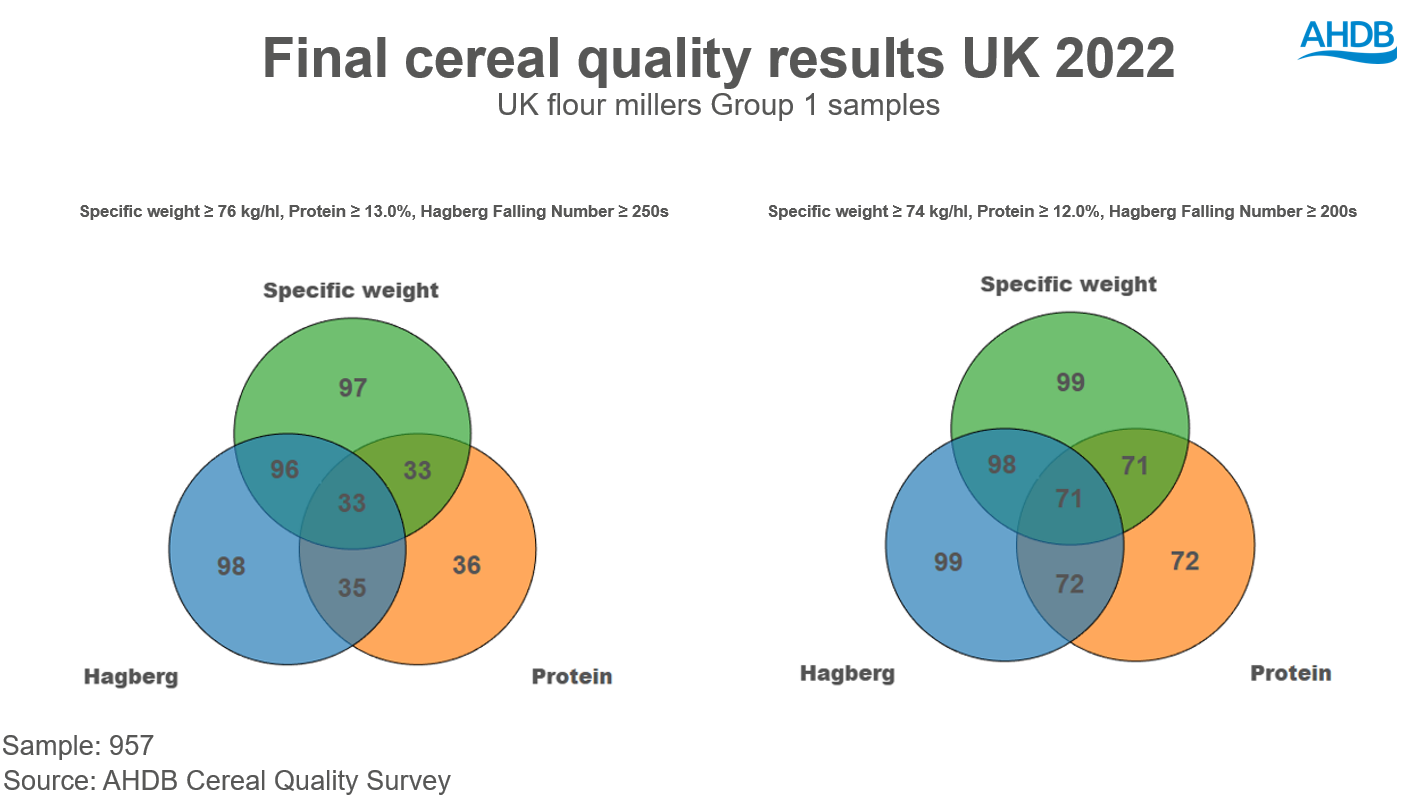No change to milling wheat nitrogen guidance?
Wednesday, 11 January 2023
Findings from nitrogen and sulphur trials on milling wheat are available in a new research report. The results do not suggest major changes to guidance are needed but do show the grain protein benefits associated with applying nitrogen above RB209’s recommendation for yield.
With fertiliser prices reaching dizzying heights in 2022, some growers are questioning whether it makes financial sense to grow a crop that requires relatively high levels of nitrogen-hungry grain protein.
Certainly, recent evidence shows that if there is a high risk of milling wheat specifications not being met (for protein, as well as for other specification traits), then the adoption of a milling wheat strategy should be reconsidered.
The challenge for the AHDB Nutrient management guide (RB209) is to help people make the right decision at the right time.
Are nitrogen rates too low?
Naturally, people cut rates if it is deemed the best strategy. However, are farmers being too cautious? British Survey of Fertiliser Practice five-year (2016–20) average data shows that milling and non-milling crops typically receive around 202 and 178 kg nitrogen/ha, respectively. The average difference of 24 kg nitrogen/ha is considerably less than the additional 40 kg nitrogen/ha typically recommended for milling varieties in RB209. The gap between the crops is even less now than it was in 2010.
The incentives to keep some nitrogen in the bag may feel clear, but the strategy is risky and potentially costly, if milling remains the target market and any additional nitrogen fails to push quality over the specification line.
The 2022 harvest shows the risks. Generally, the harvest was associated with disappointing protein percentages. It took the shine off the relatively strong performance of the other two key specification measures: Hagberg Falling Numbers (HFN) and specific weight.
AHDB Cereal Quality Survey (CQS) results revealed that only a third (33%, see chart) of Group 1 samples hit the typical specifications, with protein (>13%) the greatest limiting factor (by far). Nitrogen uptake was probably limited by periods of hot and dry conditions during critical growth stages. With hindsight, fertiliser strategies were often a ‘little off’ in 2022. However, getting the strategy right is a challenge when it combines science and experience with luck.
 AHDB
AHDB
What does the research say?
The new research featured a review of several data sets to strengthen the science element of the decision-making equation. It included an analysis of AHDB Recommended List (RL) winter wheat quality data (2017–21) from several UKFM Group 1 and 2 varieties (grown to achieve milling wheat specifications).
The results revealed the complexity. Protein content was highly variable, across sites, years and varieties. Crusoe, cited for its consistent protein performance in the RL, was the most likely variety to hit the specification. Interestingly, Crusoe also coped relatively well with the conditions in 2022, compared with other commercial Group 1 samples cited in the CQS.
The research also generated nitrogen dose and timing data from ten field experiments (2019–21) at sites in England and Scotland. Eight of the experiments also considered the interaction with sulphur timing. The researchers grew three winter wheat varieties: KWS Zyatt and RGT Skyfall (Group 1), and KWS Siskin (Group 2).
Apart from the no-nitrogen control, plots were fertilised in line with RB209’s yield recommendations for winter wheat. The experiment examined the quality effect of additional nitrogen (+40, +80, +120 kg nitrogen/ha) applied as ammonium nitrate (GS 32–35 and/or GS 37–39) and foliar urea (GS 73).
In most situations, the results showed little protein difference between extra nitrogen applied at GS 32 and GS 39. The exception was found in years with a dry spring, where the extra nitrogen helped to compensate for generally lower crop nitrogen uptake.
Applications of foliar urea at GS 73 consistently increased flour protein to higher levels than earlier applications of ammonium nitrate. No detrimental impact on baking quality was detected between the two forms of nitrogen tested.
On average (across varieties), an additional 40, 80 and 120 kg nitrogen/ha increased grain protein by 0.5%, 1.0% and 1.3%, respectively.
Sulphur interaction experiments found no significant response to doses of 0, 25, 50, 75 and 100 kg SO3/ha, probably because most of the sites were not deficient in the nutrient. RB209 guidance remains unchanged. To minimise the risk of acrylamide formation (a processing contaminant) in wheat grown for flour milling or cereal food, sulphur should be applied at a rate of 50 kg SO3/ha (where a crop is at risk of being deficient in the nutrient).
This research has reemphasised the importance of following RB209’s yield and quality fertiliser rate guidance. It also strengthened the evidence associated with the use of later foliar urea applications and the value of identifying varieties with greater consistency in performance.
The conclusions are being considered by the body responsible for revising RB209 (UK Partnership for Crop Nutrition).
Further information
This article is based on AHDB Project Report 642: Nitrogen and sulphur fertiliser management to achieve grain protein quality targets of high-yielding modern winter milling wheat
The work was led by researchers at NIAB and co-authored by teams at SRUC, Agrii, and Allied Technical Centre.
Project results were presented at the AHDB Agronomists’ Conference 2022 by Steve Hoad (SRUC).
Nutrients for oats
An ADAS-led project on oats has also delivered its final report to AHDB, providing evidence for nitrogen and sulphur fertiliser management guidelines.
Topics:
Sectors:
Tags:



